 |
Fort Chambly
Chambly, Québec, Canada
|
|
 |
Constructed: 1709-1711
(Reconstructed 1965-1985)
Used by: France, Great Britain
Conflict in which it participated:
French & Indian War,
American Revolution
|
Residents of New France in the middle of the 17th century found that they were being
killed at an alarming rate by Iroquois Indians, who no doubt found the Frenchmen very tasty indeed. The colonists informed French King Louis XIV (1638-1715) of
their plight, and in 1665 the King sent them 1200 troops to smite the Iroquois a mighty blow for France. |
 |
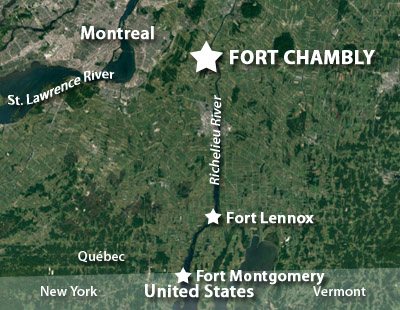 |
|
One of the leaders of the Carignan-Salieres Regiment that the King sent was Jacques de Chambly (died 1687). Chambly quickly set about not only naming things after himself, but also constructing a wooden fort on the Richelieu River (right at the conveniently-named Chambly Rapids), called Fort Saint-Louis. Thus fortified, Chambly and the Regiment then went on two raids into Iroquois territory in 1666: The first resulted in little other than dead French people, but the second proved successful, severely damaging several Iroquois villages. The Iroquois, with little other choice, decided to heed the words of John Lennon (1940-1980) and give
peace a chance, signing an agreement to that effect in 1667.
|
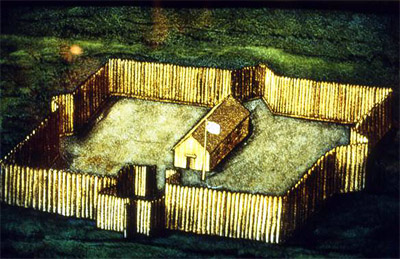 The first version of Fort Chambly (known at the time as Fort Saint-Louis), built in 1665. |
 |
Jacques de Chambly was granted the land on which he had built Fort Saint-Louis, so he named more stuff after himself and in 1673 was named the governor of Acadia (a huge area of New France that encompassed eastern Quebec, Canada's Maritime Provinces, and New England as far south as Philadelphia).
1680 saw a resurgent Iroquios Nation going back to war with the French settlers: The new Canadian Militia proved unequal to the task of defending itself, so the King sent more troops to defend the colony. By the end of the 1680's some 1500 French troops were in the region, the majority of whom were at Fort Saint-Louis. |
|
|
The Iroquois were again beaten into submission, and the Grand Peace of Montreal was signed in 1701. This didn't do much of anything for Fort Saint-Louis, which, Grand Peace or no, was burned to the ground by the Iroquois in 1702.
The fort, now known a Fort Chambly (folks had realized it was easier just to refer to everything in the area as Chambly) was rebuilt later in the same year, again of wood. By this time the War of Spanish Succession (1701-1714) had broken out, giving England an excellent excuse to mess with the French in the New World. Recognizing the Richelieu as an excellent means by which to invade New France, the French authorities rebuilt Fort Chambly as the stone mini-behemoth it is today.
|
Fort Chambly was completed in 1711, and was the bastion of Frenchness that held the wicked British at bay until Fort Saint-Frederick was built further down the Richelieu in 1731, and then Fort Saint-John in 1748. Fort Chambly was no longer at the pointy end of the spear, and was relegated to warehouse duty.
The Seven Years' War (1756-1763) made things exciting in the region yet again, and Fort Chambly was regarrisoned. The British blew right past the fort on their way to Montreal and Quebec, however, and then came back and captured Fort Chambly in 1760. At the end of the war, the vast majority of what had been New France was owned by Great Britain.
|
 |
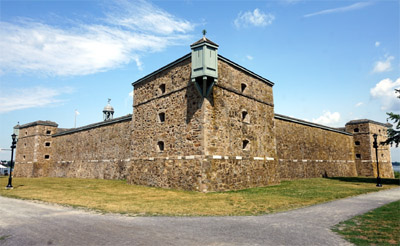 Fort Chambly in July of 2018, from its southeast corner. Fort Chambly in July of 2018, from its southeast corner. |
|
If I may speak editorially, I can't imagine why Canada was so attractive to so many armies in the 17th and 18th (and 19th!) centuries. It's cold up there. Sure, there're plenty of nice things going on in Canada (such as Canadians), but everybody wanted Canada. Case in point: During the American Revolutionary War (1775-1783), America tried its hand at invading Canada, capturing Fort Chambly on October 20, 1775. Why, when you've already got plenty of opportunities to freeze your tuckus off in New England, would you desire more chances to freeze to death in Québec? Whatever the
reason, American troops held Fort Chambly until the spring of 1776, when being faced by lots of guys dressed in red they retreated south to Fort Ticonderoga. Fort Chambly was used for the rest of the war as a convenient place to hold American prisoners of war.
|
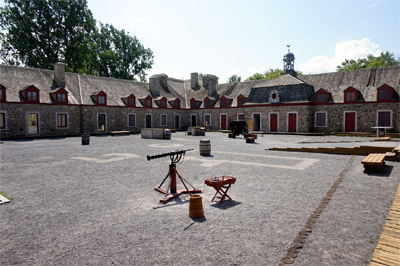 Fort Chambly's charming parade ground, featuring a pierrier á boîte, or breechloading cannon. Fort Chambly's charming parade ground, featuring a pierrier á boîte, or breechloading cannon. |
 |
Fort Chambly was somehow not of interest to anyone during the War of 1812 (1812-1815), but during the raids into Canada by the Fenian Brotherhood in the 1860's (read more about the Fenian Ridiculousness at our Fort Erie page), British
and Canadian troops once again strongly garrisoned the fort. After the Irish weirdos were expelled from Canada, however, Fort Chambly was abandoned and left to rot.
And rot it did, until in 1882 a local resident by the name of Joseph-Octave Dion (1838-1916) took it upon himself to reconstruct the fort. It is mostly due to Dion's efforts that Fort Chambly survives
today in the excellent condition that it does. |
|
|
From 1965 to 1985 extensive archaelogical digs were carried out at the fort, and it was reconstructed to represent its 1711 form. Today Fort Chambly is open to the public as a National Historical Site of Canada.
|
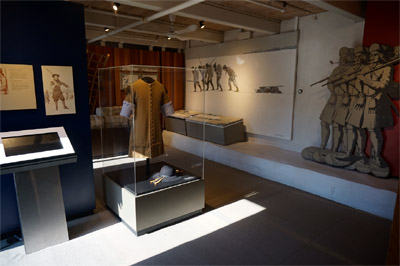 Much of the interior of Fort Chambly's walls are filled with an impressive and engaging museum! Much of the interior of Fort Chambly's walls are filled with an impressive and engaging museum! |
 |
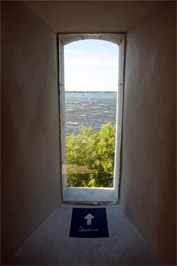 Remarquer. Remarquer. |
|
|
|
|
|
|
|
 |




